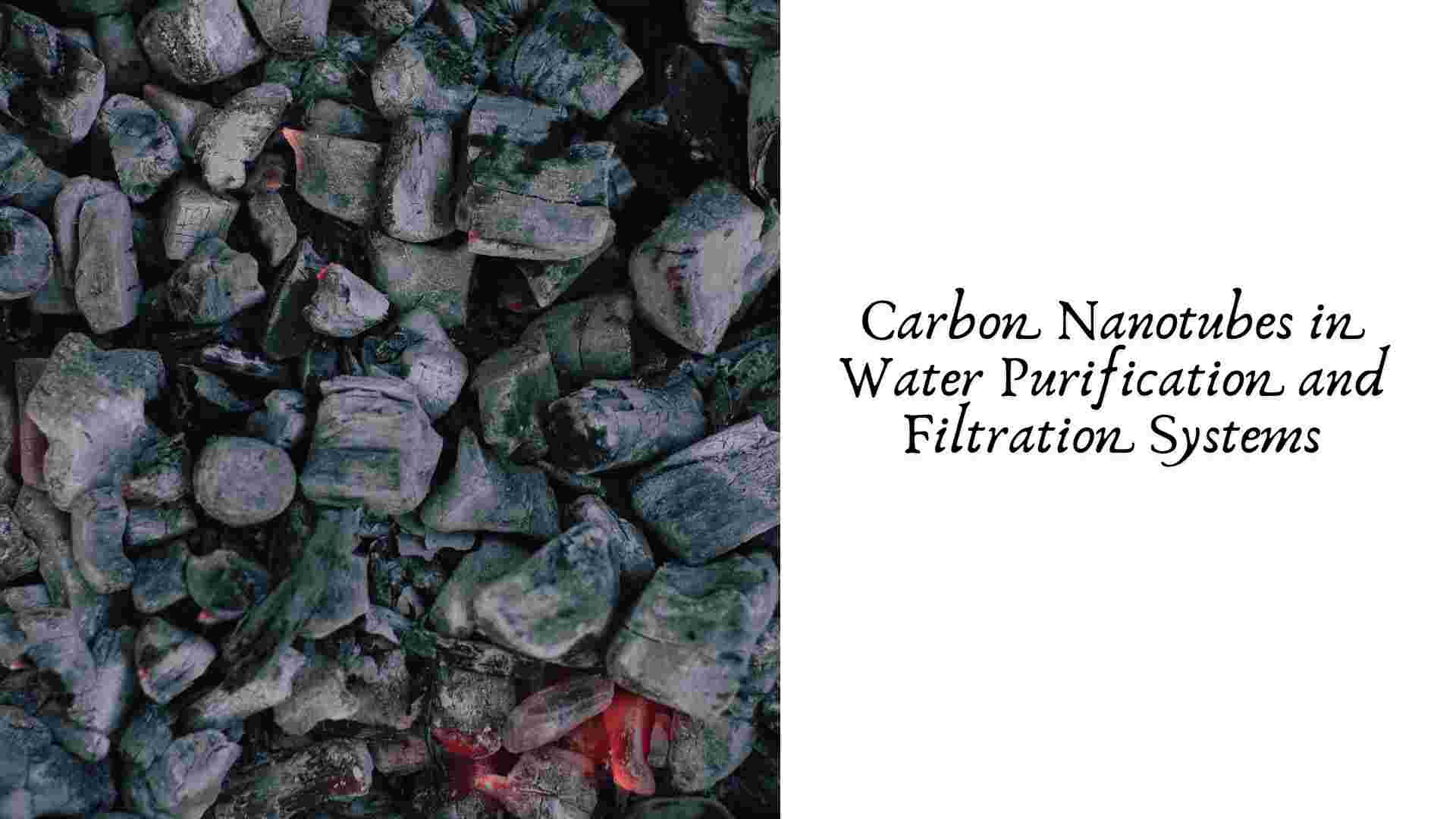Carbon Nanotubes in Water Purification and Filtration Systems

Water purification has become one of the most critical challenges of the 21st century. With growing industrialization, urbanization, and agricultural runoff, access to clean drinking water is increasingly strained. Conventional filtration systems often struggle to remove microscopic contaminants, pathogens, and heavy metals efficiently. In response to this global challenge, nanotechnology—particularly carbon nanotubes (CNTs)—has emerged as a powerful solution capable of transforming the water treatment landscape.
Understanding Carbon Nanotubes: A Brief Overview
Carbon nanotubes are cylindrical nanostructures composed entirely of carbon atoms arranged in a hexagonal lattice. They exist in two primary forms: single-walled carbon nanotubes (SWCNTs) and multi-walled carbon nanotubes (MWCNTs). Their remarkable properties—such as large surface area, exceptional mechanical strength, chemical stability, and tunable electrical conductivity—make them ideal candidates for environmental applications, including water purification and desalination.
Mechanisms of Purification Using Carbon Nanotubes
The effectiveness of CNTs in water purification stems from multiple mechanisms that operate synergistically to eliminate a wide range of contaminants:
Adsorption of Pollutants
CNTs exhibit extraordinary adsorption capacity due to their extensive surface area and π-π interactions with organic molecules. They can efficiently capture heavy metals (like lead, mercury, and cadmium), organic pollutants, and pesticides.
Filtration and Size Exclusion
CNT membranes function as ultrafiltration or nanofiltration barriers, capable of physically blocking particles, bacteria, and viruses from passing through while allowing water molecules to flow.
Electrostatic Interactions
Functionalized CNTs can be modified with specific surface groups (e.g., carboxyl, hydroxyl, or amine) to attract and bind charged contaminants such as nitrates and phosphates, enhancing their selectivity and performance.
Catalytic and Antimicrobial Properties
CNTs can act as catalysts or catalyst supports for advanced oxidation reactions that degrade organic pollutants. Moreover, their sharp edges and reactive sites exhibit antimicrobial activity, disrupting bacterial membranes and preventing biofouling in filtration systems.
Applications in Water Treatment Technologies
The versatility of carbon nanotubes allows their integration into a variety of modern water purification systems:
-
CNT-Polymer Composite Membranes: Embedding CNTs into polymer matrices enhances membrane permeability and mechanical stability while minimizing fouling. These hybrid membranes are used in both municipal and industrial wastewater treatment.
-
CNT-Based Adsorbents: Powdered or granular CNTs serve as high-performance adsorbents for removing toxic ions, dyes, and persistent organic pollutants.
-
Desalination Membranes: CNT membranes facilitate rapid water transport and salt rejection, offering an energy-efficient alternative to traditional reverse osmosis systems.
-
Photocatalytic Systems: When combined with photocatalysts like TiO₂ or ZnO, CNTs enhance light absorption and electron transfer, accelerating the degradation of organic contaminants under UV or visible light.
Advantages Over Conventional Filtration Technologies
Carbon nanotube-based purification systems offer several advantages compared to traditional activated carbon or polymeric filters:
-
Superior Filtration Efficiency – CNT membranes can remove contaminants at the nanometer scale, including viruses and dissolved organic compounds.
-
Higher Water Permeability – The smooth, hydrophobic surface of CNTs allows faster water flow with minimal resistance.
-
Enhanced Mechanical and Chemical Durability – CNTs withstand high pressures, temperatures, and chemical exposures, extending membrane lifespan.
-
Reduced Fouling – Their antimicrobial and non-stick properties minimize clogging and biofilm formation, reducing maintenance needs.
Challenges and Limitations
Despite their promise, several challenges must be addressed for large-scale adoption of CNT-based purification technologies:
-
High Production Costs – Synthesizing CNTs with controlled size, purity, and functionality remains expensive.
-
Environmental and Health Concerns – Potential toxicity and environmental persistence of CNTs demand comprehensive safety evaluations.
-
Scalability – Integrating CNT membranes into large industrial systems requires optimization of fabrication processes and long-term stability.
-
Regulatory Uncertainty – Lack of standardized regulations for nanomaterials in water treatment may slow commercialization.
Recent Research and Innovations
Current research is focused on overcoming these limitations through:
-
Green Synthesis Methods – Using biomass precursors and low-energy processes to produce eco-friendly CNTs.
-
Functionalization Strategies – Enhancing selectivity and adsorption capacity by attaching tailored chemical groups.
-
Hybrid Nanocomposites – Combining CNTs with other nanomaterials like graphene oxide, silver nanoparticles, or zeolites for synergistic effects.
-
AI and Data-Driven Optimization – Employing machine learning models to predict performance and design efficient CNT-based systems.
Future Outlook
As the global demand for clean water intensifies, carbon nanotube-based purification systems are poised to play a transformative role in sustainable water management. With ongoing advances in nanomanufacturing, material functionalization, and safety assessment, CNT membranes and filters could soon become mainstream components in municipal treatment plants, industrial wastewater facilities, and portable water purification devices.
The convergence of nanotechnology and environmental engineering marks a critical step toward achieving UN Sustainable Development Goal 6: Clean Water and Sanitation for All. Carbon nanotubes, with their unique structural and functional attributes, represent a vital technological bridge to that future—where clean, safe, and accessible water is no longer a luxury, but a universal right.
- Art
- Causes
- Crafts
- Dance
- Drinks
- Film
- Fitness
- Food
- Jogos
- Gardening
- Health
- Início
- Literature
- Music
- Networking
- Outro
- Party
- Religion
- Shopping
- Sports
- Theater
- Wellness



